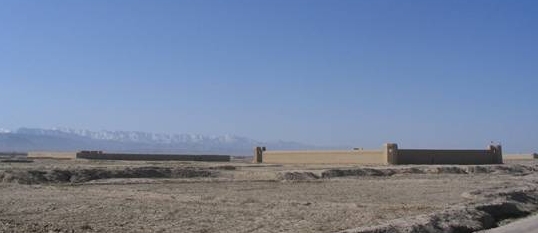
Modern
Day Fortresses
Zurmat is about 25 miles from Gardez. It took over an
hour to drive there.
Not because of traffic jams. No, just a bad road, a dirt
road with ripples and washouts so bad that most of the trip was made in 2nd
gear. Bouncing around like shoes
in a clothes dryer, I finally saw the utility in a Sport Utility Vehicle.
The road passed through a broad valley extending for
miles to the mountains on either side. Not a single tree in sight.
Instead, what seemed to sprout from the ground were huge
walled compounds.
Most were off in the distance, hundreds of yards or more
from the road. With nothing next to them, not a vehicle or tree or person, it
was hard to estimate their size. But based on their gates, I’d guess their
walls are 12 to 14 feet high, and based on our home back in

Building with brick and mud is the most common method
here, both in the city and out in the country. If not in material, these walled
compounds seem to be an enormous investment in labor and time. In America
we might put up a privacy fence, maybe a barbed wire or split-rail fence, maybe
just some chain-link around the yard to keep the kids or dogs in. But a 14-foot
high, 2-foot thick wall expected to last 60 or 70 years, completely surrounding
the entire property?
Obai told us three reasons for the massive walls:
1. Ownership. Without surveys and a government office to
record the boundaries of your land, ownership is declared with a
permanent wall.
2. Security. These walls stop bullets, grenades,
shrapnel, robbers, muggers, etc. Some of the compounds add turreted watchtowers
for increased security.
3. Privacy. Women inside the walls have the freedom to
be outdoors without a burka, with men outside the family unable to see them.
Have to say, for this country, its culture and its history, it makes
sense.
Once inside the walls, an Afghan would have his own
universe:
homes for extended families, shelter for domestic animals, gardens, orchards,
wells.
The rest of the country can descend into chaos, but inside my walls all will be well.
next: Special Forces camp at Zurmat or back to Kohn's Corner